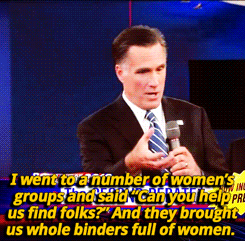By Kim Adamski
Yesterday I had an interview at a firm in Hartford. It was my first interview for a post-graduate job. Of course, I was rather nervous, and so I did quite a bit of research on what I should wear. The general consensus on the internet was a conservative skirt suit, blouse, and pumps. I was also cautioned to never forego pantyhose. Commenters across the board warned of interviewers who would not hire a woman not wearing pantyhose. “Fine,” I thought, “whatever gets me hired.” So I bought a pair for $5 at CVS. I pulled them on, finished the look with a pair of nude heels, and was on my way.
Now, pantyhose is an incredibly inconvenient and impratical invention. In the summer especially, they are difficult to get on and uncomfortable to boot. The worst part is that they are basically a disposable garment. After a few wears, they will develop a run and require replacement. I really hate to create waste. On the upside, they do make wearing heels more comfortable. But wait – why do I have to wear heels, another absurdly impractical interview staple? Oh, right – because it is the standard of professional wear and is more likely to get me hired.
What does professionalism mean? Clothing-wise, it means to dress conservatively, to blend in rather than to stand out. I get it – in business, the goal is to highlight the product for sale, not the personal style of the person selling it. Getting too crazy with fashion could be distracting or even offensive to customers. The employee needs to look as “normal” as possible. Normal, however, has a very narrow definition in business, and in many cases it promotes discrimination, including sexism, racism, and classism.Obviously, most firms are not trying to perpetuate discrimination – they are simply trying to fit in with industry standards. Unfortunately, these standards exclude certain people. People who are not attractive, thin, white, or do not conform to gender norms are less likely to be hired. It’s true! To illustrate; imagine a typical corporate interviewer invites a woman to interview for a given position. He is surprised to discover that his interviewee appears to be a male-to-female Trans* person. Or a heavy, masculine lesbian woman. Or a gender-nonconforming man in a skirt. Or a black woman with a considerable Afro. Or a person with an obvious physical deformity. The interviewer, of course, is unlikely to say anything and politely go forth with the interview. But when given the choice between one of these people or a “normal”-looking person with similar credentials, you can bet that the latter will be offered the job. Numerous studies from reputable institutions like the National Bureau of Economic Research have confirmed this – “Black-sounding” names are unprofessional. So are non-Western fashions, tattoos and other body modifications, extremely short stature, and heavy foreign accents.
I think that there is such a thing as true professionalism – but it is not complete uniformity and denial of individuality. Why not focus on a person’s personality, demeanor, and abilities? Why not broaden the definition of a “professional” appearance to be more inclusive? Unfortunately this is very hard to change, as subtle discrimination is difficult to detect, because it is usually unintentional and unconscious. In the meantime, I still need to pay the bills, so I will begrudgingly pull on my pantyhose, put away my blue nail polish, and play the professional and proper gender role as best I can in order to find my first real-world job.
Kim Adamski co-hosts a public affairs show on WHUS called Full Frontal Feminism with DJ KBham. Find more information on their Facebook page, facebook.com/fullfrontalfeminism.


![pantyhose[1]](http://whus.org/wp-content/uploads/2014/07/pantyhose1-300x200.jpg)
